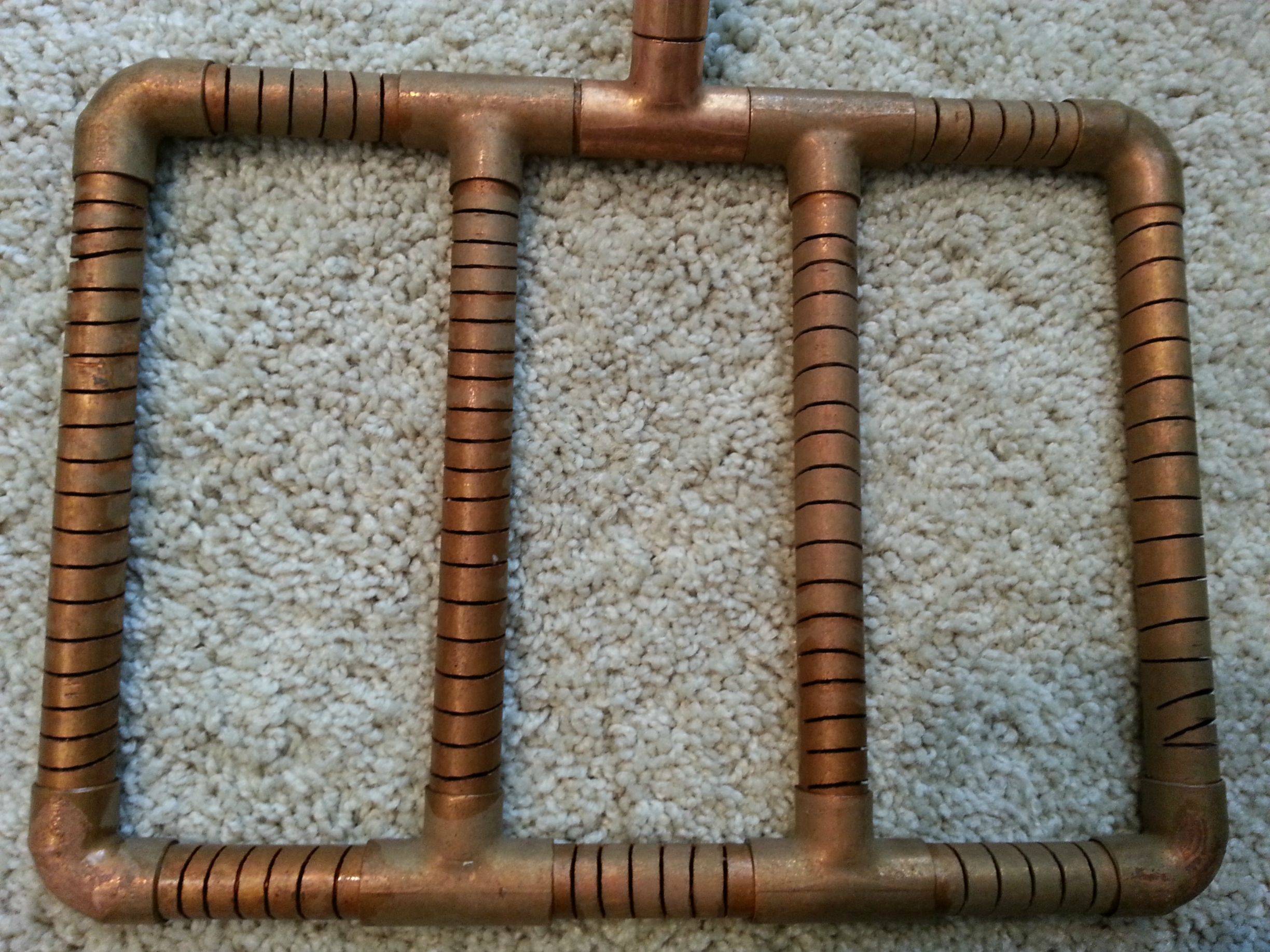barhoc11
Well-Known Member
Ever since I built the copper manifold shown below, I get stuck sparges 9 out of 10 times. I am now to the point that I want to change things up or figure out what the heck is going on. My manifold is not unlike many others in this forum so I cannot figure out what I am doing wrong. The manifold has linear cuts in the bottom throughout just as others do, you cannot see it in the picture.
I crush my own grain after conditioning it and I do get a good fine crush but I even see some whole kernels so I can't be crushing too fine (unless that is a fault with a corona mill). I am ready to go back to a braided tube at this point I am so frustrated, any help is much appreciated.

I crush my own grain after conditioning it and I do get a good fine crush but I even see some whole kernels so I can't be crushing too fine (unless that is a fault with a corona mill). I am ready to go back to a braided tube at this point I am so frustrated, any help is much appreciated.






























![Craft A Brew - Safale BE-256 Yeast - Fermentis - Belgian Ale Dry Yeast - For Belgian & Strong Ales - Ingredients for Home Brewing - Beer Making Supplies - [3 Pack]](https://m.media-amazon.com/images/I/51bcKEwQmWL._SL500_.jpg)










